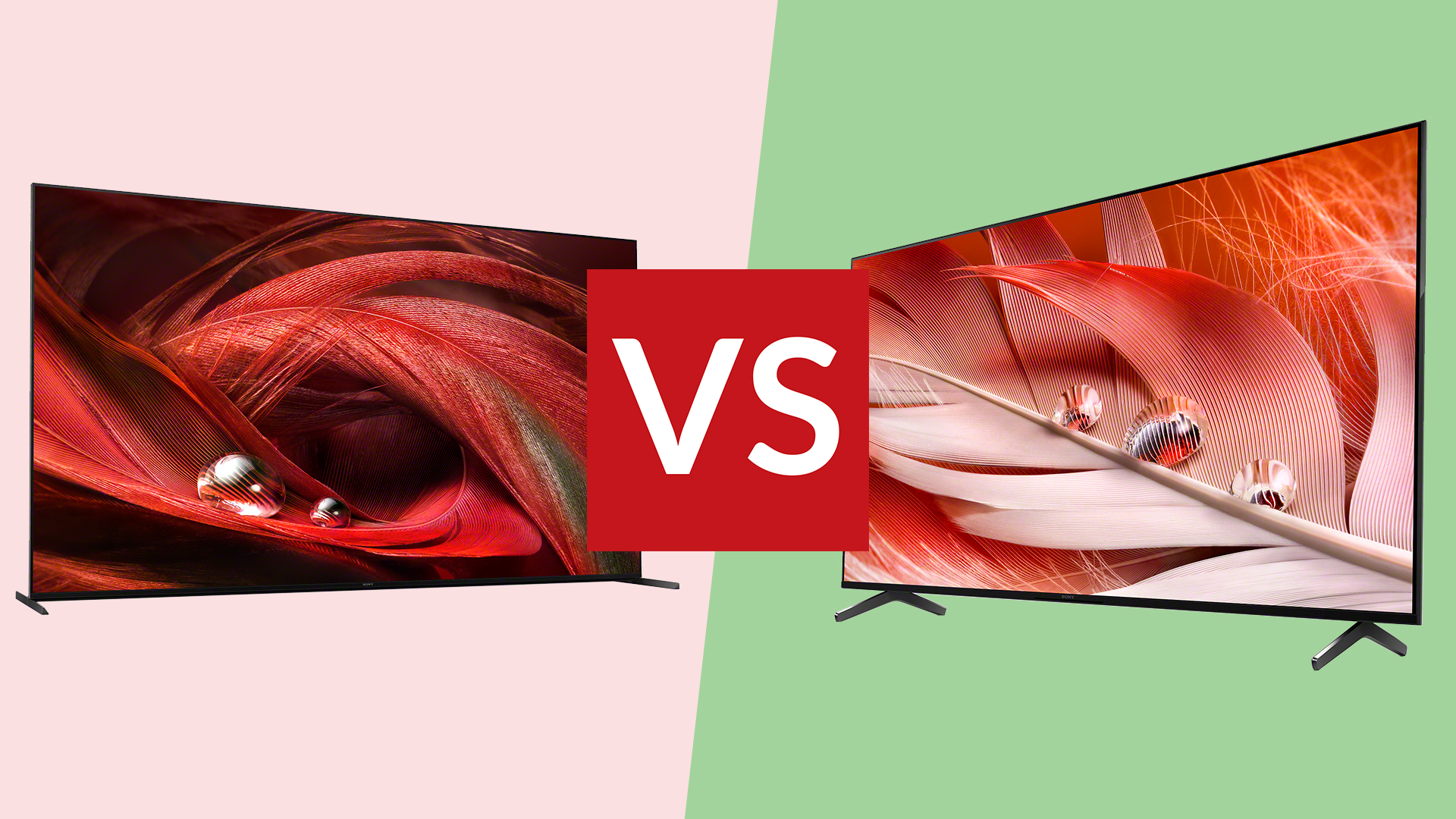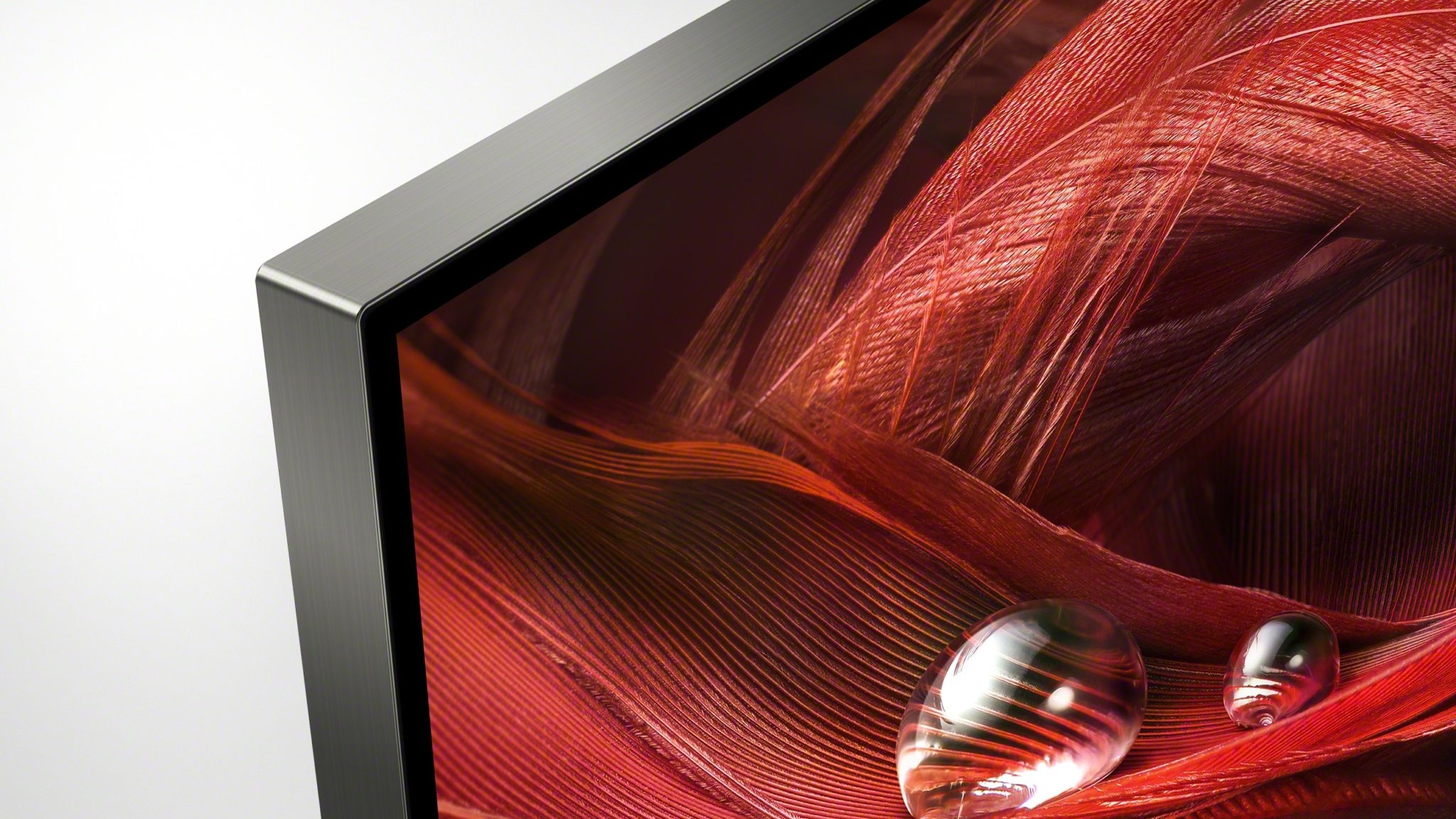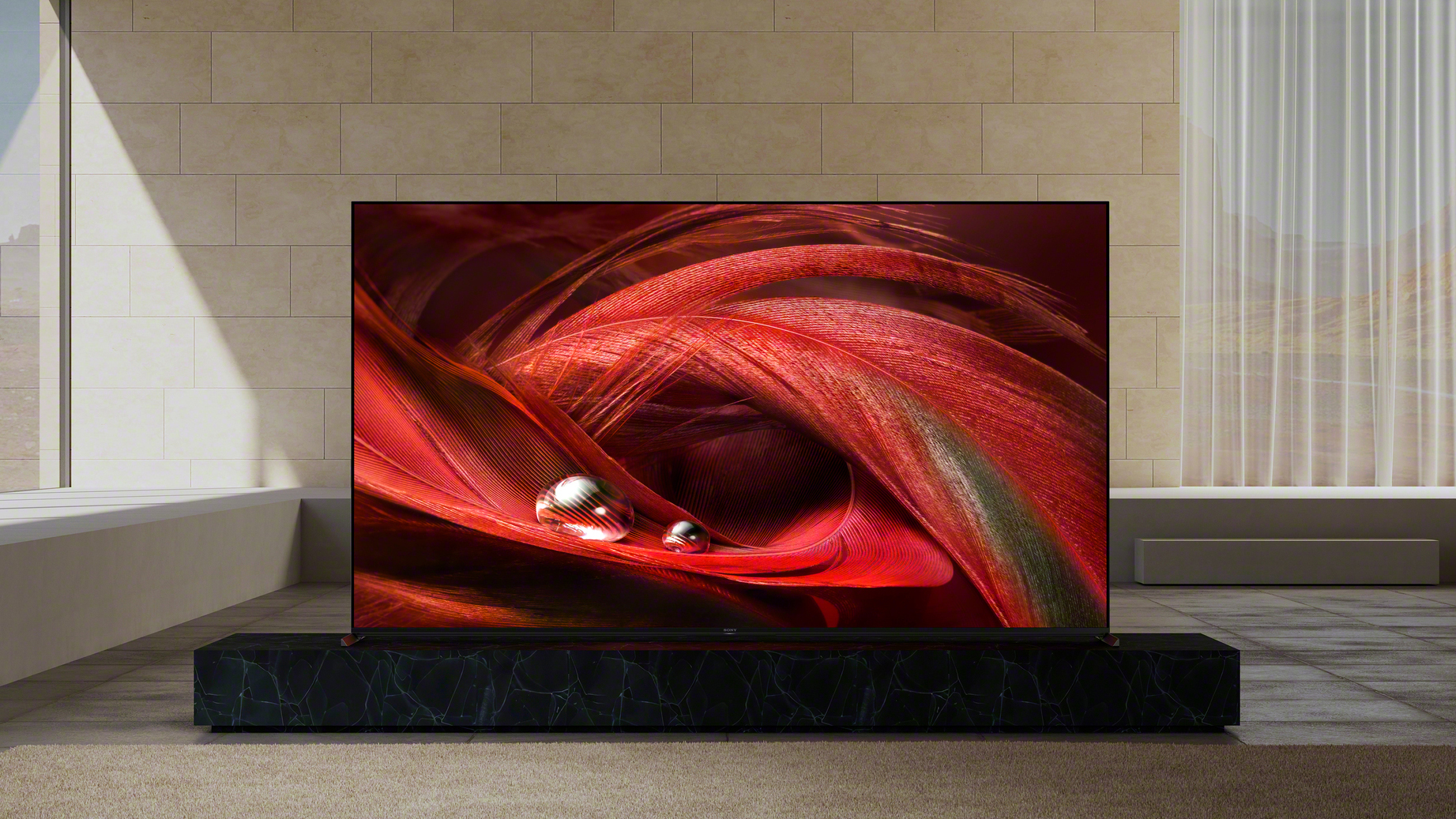
If you're looking for 4K TVs in 2021 that offer high-end visuals for a reasonable price, the question of Sony X95J vs Sony X90J will surely come up. Both of these TVs fit the bill, and are the top two models in Sony's current range before you step up the added cost of its OLED TVs.
Sony’s Master Series Bravia XR X95J is an ultra-slim LED TV with a full array backlight, with cutting edge Cognitive Processor XR processor and shiny-new Google TV smart platform. You’ll need big AV furniture to accommodate it, though, as it’s only available in 65-, 75- and 85-inch screen sizes. With its particular set of features, it should be one of the best 75-inch TVs we'll see this year.
The sibling XR X90J is available in four screen sizes, starting at 50 inches. It can’t match the XR X95J for absolute thinness, but it’s undeniably svelte with a minimal bezel, and it boasts the same image processing tech and connectivity. It's also much cheaper.
Both are strong contenders for our list of the best TVs, but what are the differences between them? Let's dig in.

The Sony X90J comes in a great range of sizes.
Sony X95J vs Sony X90J: Price
It’s no surprise that the flagship X95J commands a price premium. Only available on the large side, at 65-, 75- and 85-inches (XR-75X95J, XR-75X95J, XR-85X95J), it’s priced at £2,199, £3499 and £4,499 respectively.
Sony’s Bravia XR X90J range comprises 50-, 55-, 65- and 75-inch models (XR-50X90J, XR-55X90J, XR-65X90J, XR-75X90J), priced at £1,249, £1,399, £1,799, and £2,599 respectively. That’s a particularly big saving on the 75-inch X90J.
In Australia the X90J LED model is available in 50-, 55-, 65- and 75-inch guises, priced AUS$1,795, AUS$1,995, AUS$2,495, and AUS$3695.
Get all the latest news, reviews, deals and buying guides on gorgeous tech, home and active products from the T3 experts
The US XR X90J is available in 50-, 55-, 65- and 75-inch screen sizes, priced at $1,099, $1,199, $1,399 and $2,099.
In Australia and America, there’s currently no X95J iteration.
You can find the latest prices on all models here:

The Sony X95J features a metal bezel, giving a real premium finish.
Sony X95J vs Sony X90J: Design and connectivity
A cursory glance suggests precious little difference between the X90J and larger X95J when it comes to design, but that would be wrong.
Both models feature adjustable feet, which can be placed at the edge of the screen or towards the centre – this is called a two-way Slim Blade stand. This not only allows some freedom when it comes to the width of your furniture, it could also clear space for adding one of the best soundbars. Note that the adjustable feet option is not available on the 50-inch X90J (the smallest size).
The X95J features a more stylish titanium silver seamless edge wrap, with Black Metal Edge stand (and who doesn't like a bit of black metal?). Sony calls this a Seamless Edge design. The bezel on the X90J is a plastic (faux metal), with a flush surface. Still looks nice, though.
Connectivity is identical between the two models. There four HDMI inputs, one of which has eARC, but only two of this HDMI quartet are HDMI 2.1, with 4K 120Hz support ready for PlayStation 5 and Xbox Series X. There's also planned support for Variable Refresh Rate and Auto Low Latency, but these will come later in the year, in an update.
Other connections include two USBs, Ethernet, a digital optical output, Wi-Fi and Bluetooth 4.2.
While both models offer integrated cable management, the X90J achieves this with open ports, and clips on the stand. The larger X95J hides cable management away, for a more streamlined appearance.
There’s also a difference in the supplied remote. The X90J comes with a standard unit, while the X95J boasts a more premium, backlit remote.

The Sony X95J offers better contrast than its sibling.
Sony X95J vs Sony X90J: Picture & sound quality
While our two Sony champs seem equally matched when it comes to features and smart functionality, there’s some significant differences where it counts.
Both the X90J and X95J are full-array backlit LED sets, for high average picture level and precise peak HDR highlights.
They also share the same new Cognitive Processor XR processor, designed to bring a more human sensitivity to AI-driven image processing, a Dynamic Contrast Enhancer and XR HDR Remaster technology, which has long been a strong suite for Sony.
They also both use XR Contrast Booster technology; however the X90J model warrants an XR Contrast Booster 5 rating, while the larger X95J model doubles that to XR Contrast Booster 10, so expect more impact to HDR there.
The X95J also has a wider viewing angle courtesy of X-Wide Angle wizardry, which is conspicuously missing from the X90J. This offers a degree more latitude when it comes to seating arrangements. If you plan to view square on, there’s no significant difference between the models, but in a living room where people view from an angle, image quality will be maintained better on the X95J for those at the edge.
A Netflix Calibrated viewing mode and IMAX Enhanced certification are offered on both models. HDR coverage uniformly includes Dolby Vision, HLG and HDR10.
The are significant differences in audio execution, though. The X90J Acoustic Multi Audio system comprises two downward facing speakers, with two sound positioning tweeters. Power output is rated at 2x10W.
The larger X95J features a more advanced version of Acoustic Multi Audio, with two forward facing speakers, two sound positioning tweeters, and a built-in subwoofer, all with independent amplification. All drivers get 10W, for a formidable 50W output. It's a significant step up.
Sony X95J vs Sony X90J: Smart platform
Inevitably, there’s common ground between these two LED flatscreens when it comes to smart functionality. Both use Google TV for 2021, moving on from the Android system used previously.
Streaming support is uniformly good, with Netflix, Amazon Prime Video and Disney+ leading the service app charge.
Also common to both is Chromecast built in (for easy casting from a smartphone), Amazon Alexa and Siri support, as well as Apple AirPlay. Only the X95J has a built-in microphone, though, for voice control.
Both the X95J and X90J offer Bravia Core, Sony’s own high quality movie streaming service. This promises new PPV and classic titles, and takes advantage of Pure Stream technology, to achieve UHD Blu-ray like quality.
Sony X95J vs Sony X90J: Verdict
So there you have it. The Sony X90J and Sony X95J are unquestionably top notch LED TVs designed for a discerning audience (and that means you!). There’s surprisingly little compromise in terms of spec or performance either way.
When it comes to connectivity, there’s nothing to split the two models. Both offer 4K 120Hz inputs, although with only two HDMIs enabled, some power viewers may want to consider a Samsung QN95A or LG C1 instead, which feature HDMI 2.1 on all four ports, making them more flexible and future-proof.
The biggest point of difference is sound and vision. The X95J features a higher spec XR Contrast Booster and audience friendly X-Wide Angle technology. It also has a more potent sound system… but then it is only available in larger screen sizes.
If you’re after a superior home cinema experience, with better contrast and superior sound, we reckon the X95J is the model to strive for.
For those unable to accommodate a 65-inch plus TV, or who want to keep the budget lower, the X90J offers much the same in a smaller and more affordable package.
For over 25 years, Steve has been casting his keen eyes and ears over the best that the world of TV and audio has to offer. He was the creator of Home Cinema Choice magazine, and contributes to huge range of technology, home and music titles along with T3, including TechRadar, Louder, Ideal Home, the i newspaper, and more.

